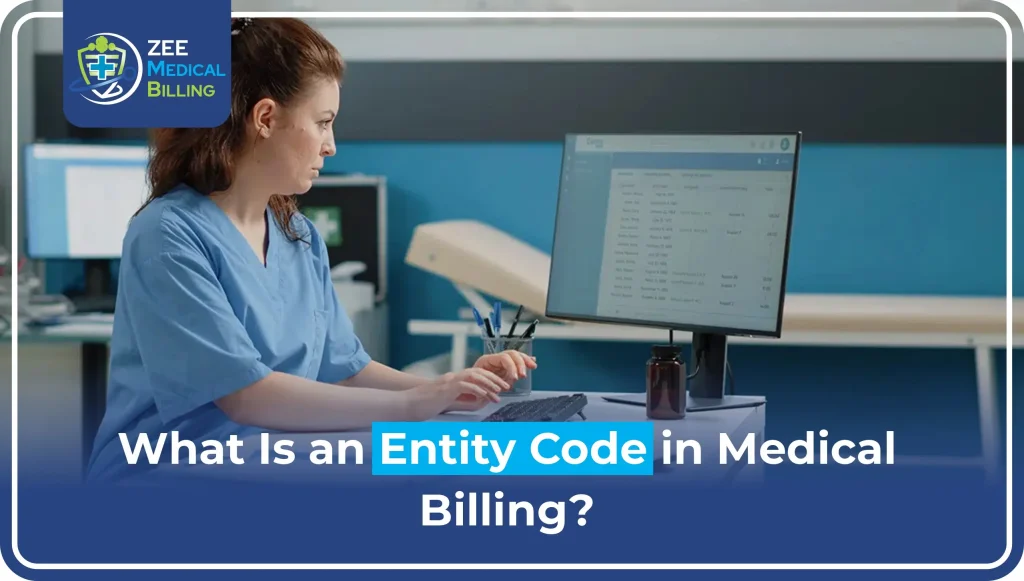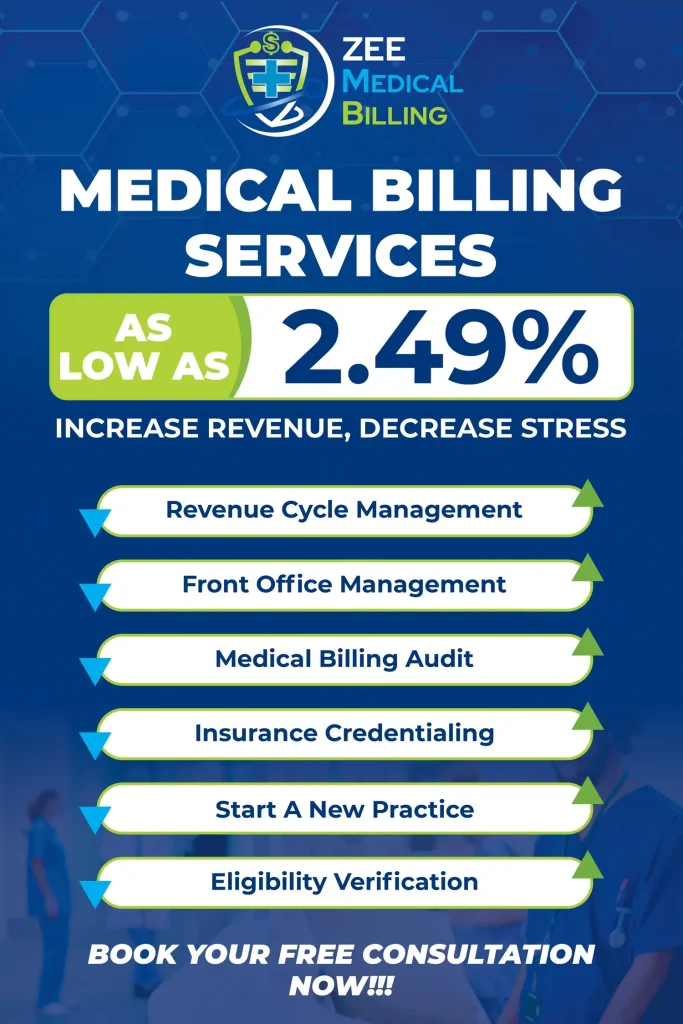In the world of medical billing, accuracy is everything. One small error can lead to claim rejections, delays in payment, or administrative confusion. Among these common issues is something called an entity code. But what exactly is an entity code in medical billing, and why does it matter?
An entity code indicates the type of person or organization involved in the healthcare claim. This can be a patient, provider, or insurer. It ensures that the billing and claim processing reference the correct party. When this code is missing, incorrect, or mismatched, it can cause rejections from insurance payers or clearinghouses.
What Is an Entity Code?
An entity code is a number or a mix of letters and numbers. Medical claims use it to show the role of a party in a transaction. This includes individuals like the patient or provider and entities such as insurance companies or healthcare facilities.
Also Read: Colonoscopy CPT Codes Explained Simply for Billing
Common Entity Code Examples:
- Subscriber (Patient)
- Billing Provider
- Rendering Provider
- Referring Physician
- Payer (Insurance Company)
These codes are very important when claims go through clearinghouses. Clearinghouses check the claim data before sending it to the payer.
Why Are Entity Codes Important in Claims?
Entity codes help assign data in a claim to the correct party. For example, if a claim lists a billing provider without a proper entity code, the system might not recognize who is responsible for the charges. This often results in a clearinghouse rejection or payer denial.
Key Functions of Entity Codes:
- Distinguish between individuals and organizations
- Help validate NPI numbers
- Prevent incorrect billing assignments
- Support smooth claim routing through clearinghouses
Common Reasons for Entity Code Rejections
1. Incorrect or Missing Codes
Failing to assign the correct entity code can confuse the clearinghouse or insurance payer, causing a rejection.
2. Mismatch Between NPI and Entity Code
If a National Provider Identifier (NPI) doesn’t match the expected entity type, the claim may be flagged.
3. Invalid Role Assignment
Putting a provider’s NPI in the wrong role can cause problems. For example, listing the rendering provider as the billing provider can lead to entity code issues.
4. Payer-Specific Requirements
Some insurance payers require certain roles to be defined in particular ways, especially in Medicare or Medicaid claims.
Key Rejection and Remark Codes Linked to Entity Codes
| Code | Description | Action Required |
| N290 | Missing, invalid, or incomplete entity code | Verify the NPI/Entity type pairing and correct it |
| N293 | Check the NPI and role assignment of the provider/patient | Confirm role-specific requirements from the payer |
| N519 | The entity code is needed for clarification or processing | Add or correct entity role assignment |
| IND-452 | Entity code mismatch with submitted NPI | Check the member ID and ensure the correct relationship to the insured |
| MEMBER PICK | The claim was rejected due to wrong or unclear member information | Check the member ID and ensure correct relationship to the insured |
Tip: Always double-check the payer’s billing guide. Each payer might have slightly different entity code rules.
Entity Codes in Real-World Claim Scenarios
Scenario 1: Claim Rejected Because of Missing Billing Provider Entity Code
A clinic submits a claim with the provider’s name and NPI but forgets to assign the billing provider entity code. The clearinghouse rejects the claim, citing code N290. Once corrected, the claim processes successfully.
Scenario 2: Mismatch Between Subscriber and Patient Roles
An insurance plan lists the subscriber as the primary member, but the patient listed is the spouse. If the entity code is wrong, the claim might be rejected. This will result in a MEMBER PICK error.
Also Read: Complete List of GERD ICD-10 Codes You Need to Know
Difference Between Entity Codes and Rejection Codes
| Category | Entity Codes | Rejection/Remark Codes |
| Purpose | Identify roles in claims | Assign the correct code for each entity |
| Usage | Applied to individuals or organizations in claims | Applied to claims after review |
| Examples | Billing Provider, Subscriber, Payer | N290, N519, IND-452, MEMBER PICK |
| Fix Method | Assign correct code for each entity | Address the specific issue described |
How to Avoid Entity Code Rejections?
✅ Use Practice Management Software Wisely
Make sure your software assigns the right entity codes automatically. Double-check during claim submission.
✅ Cross-Verify NPI & Role Pairing
Ensure that the NPI belongs to the correct entity type—individual or organization.
✅ Follow Clearinghouse Guidelines
Some clearinghouses provide rulebooks on what entity codes to use. Familiarize yourself with these.
✅ Monitor Denials and Patterns
If you receive frequent N290 or N293 codes, audit your workflows and templates.
FAQs
1. What is an entity code in medical billing?
An entity code is a value used on claims to specify the role of a party involved, such as a patient, provider, or insurer. It ensures correct claim processing by distinguishing each participant’s role.
2. What causes an entity code rejection?
Entity code rejections usually happen because of wrong or missing role assignments. They can also occur due to mismatches between NPI and entity type, or specific payer role expectations.
3. What does the N290 remark code mean?
N290 indicates that someone rejected a claim because it is missing, incomplete, or has an invalid entity code. You should verify and correct the role assigned to the individual or organization.
4. How do I fix the reject code IND-452?
Reject code IND-452 often signals a mismatch between the NPI and the assigned entity code. Check if the NPI belongs to a group or individual and match the entity type correctly in your claim software.
5. Can clearinghouses help prevent entity code rejections?
Yes. Most clearinghouses perform pre-submission checks and flag missing or invalid entity codes. Using a clearinghouse with built-in claim validation can help reduce errors.
Conclusion
Entity codes are very important in medical billing. They clearly define everyone involved in a healthcare transaction. Mistakes with these codes often lead to claim rejections, especially with errors like N290, N519, and IND-452.
By understanding what entity codes are and how they work, billing professionals can improve claim approval rates. They can also reduce delays in administration by correcting or preventing related issues.
Need Expert Medical Billing Services?
Zee Medical Billing provides professional billing solutions tailored to healthcare providers across the United States. In addition to offering top-tier support from our main office, we proudly serve clients in Illinois, Indiana, California, Kentucky, New York, Washington, Georgia, Alabama, South Carolina, Texas, Pennsylvania, Ohio, New Hampshire, Nevada, Massachusetts, Hawaii, Arizona, and Colorado! Whether you’re looking to streamline your revenue cycle or improve claims accuracy, you can reach out to us to learn more about how we can support your practice.









